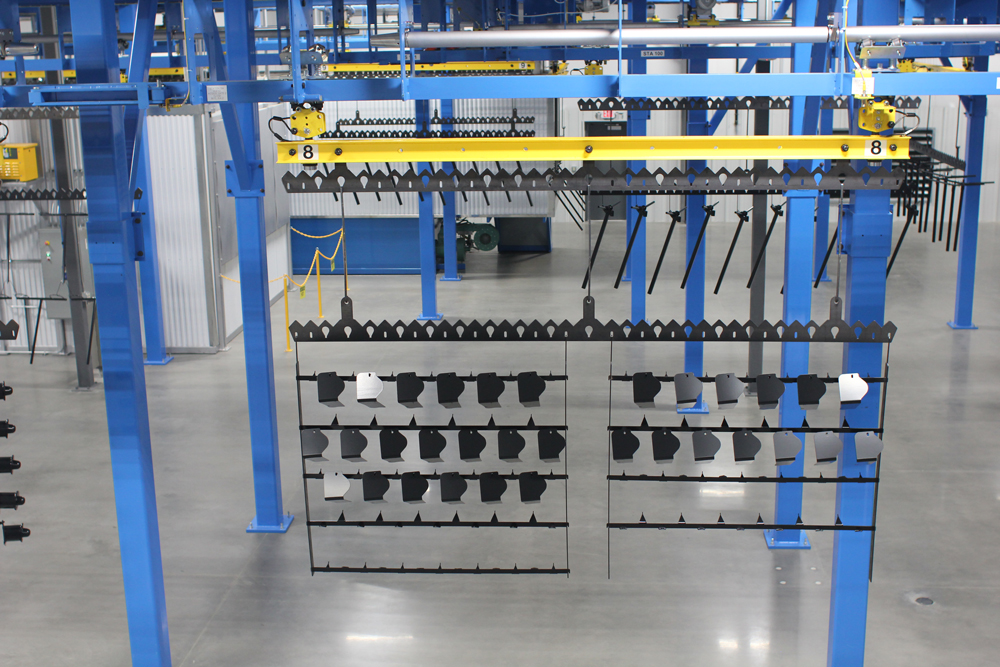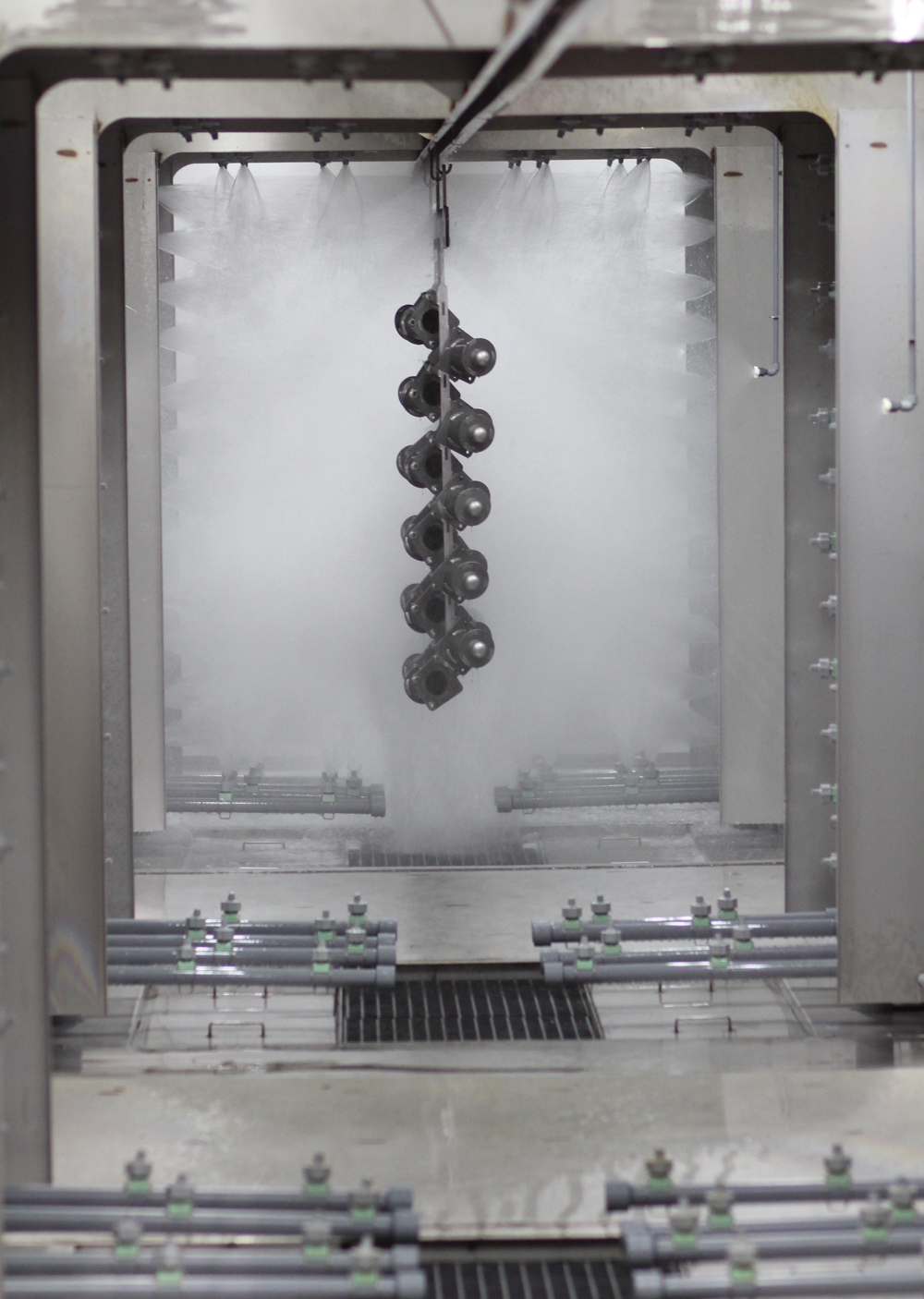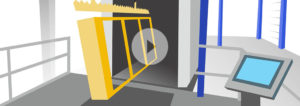 Finding the right solution for a company’s operations can be complex, especially when the needs are very custom. At IntelliFinishing, we offer unique solutions for powder coating systems which can be designed to meet any specific needs or requirements. One of our biggest differentiators is flexibility. Our friction-driven conveyor and smart controls deliver just that. We work with customers in many different industries and want to share with you a specific story of our work with JR Custom Metal Products, a Wichita, KS-based metal fabricator.
Finding the right solution for a company’s operations can be complex, especially when the needs are very custom. At IntelliFinishing, we offer unique solutions for powder coating systems which can be designed to meet any specific needs or requirements. One of our biggest differentiators is flexibility. Our friction-driven conveyor and smart controls deliver just that. We work with customers in many different industries and want to share with you a specific story of our work with JR Custom Metal Products, a Wichita, KS-based metal fabricator.
Why They Needed a Custom Solution
Several objectives were driving JR Custom Metal Products’ need for a new powder coat solution. They were looking to increase the quality of the paint finish for their customers. Their existing process, which was outsourced, granted the company no control over quality, often requiring considerable rework. Further, outsourcing was proving to be extremely costly, coming in at over a million a year, with slow lead times that were impacting operations. Dealing with a great variety in part sizes, JRCMP also wanted to be able to deliver the highest quality coatings based on their own values and to better meet customer turn times.
With no control over quality or delivery timing, it was time to bring operations back in-house and build a system customized to their unique needs that allowed for more cost-effective processing.
Jorge Martinez, Vice President of Sales and Marketing at JR Custom Metal Products, said, “Once we made the decision to build a powder coat finishing line, we wanted to do it right.” Doing it right involved a lot of research and time to find a seamless solution to the challenges they were facing.
The Challenge
 JR Custom Metal Products required a very customized solution for powder coating because of different part sizes, thicknesses, and process times. They also needed to have the ability to stop for manual processes at the shot blast blow off platform, a de-watering station, a masking area, and for the powder coating application, while minimizing any quality defects that could occur with operators stopping the conveyor or extending manual process times. Further, they required an optional path to an automated in-line blast system.
JR Custom Metal Products required a very customized solution for powder coating because of different part sizes, thicknesses, and process times. They also needed to have the ability to stop for manual processes at the shot blast blow off platform, a de-watering station, a masking area, and for the powder coating application, while minimizing any quality defects that could occur with operators stopping the conveyor or extending manual process times. Further, they required an optional path to an automated in-line blast system.
Jorge said, “We are a job shop, and we needed a lot of flexibility. We also wanted to blast on the line, not offline. Manually blasting a heavy 10-foot long part or multiple smaller parts can take 20-30 minutes each, but with our system, we can blast 10 feet of loaded parts in as little as 30 seconds up to 2 minutes, depending on the part thickness and intricacy.”
The Solution
After a four-year process of investigation, attending PCI, FabTech, and peer group meetings where they talked with a variety of vendors and visited numerous sites with systems in place, JRCMP first chose Midwest Finishing Systems to build their system, but as their needs were explored, MFS brought in IntelliFinishing. JRCMP was particularly intrigued by IntelliFinishing’s unique flexibility, especially the cutting-edge conveyor system which was also incorporated into the design.
Martinez commented, “We use load bars that can hold up to 2,000 lbs. each. We can select dual lanes and have multiple substrates running all at one time because we can select a recipe for each particular load bar—not for the whole line. There’s not very many systems in the finishing industry that can do this.”
How the System Works
To meet all of JRCMP’s requirements, IntelliFinishing created a plan to make powder coating easier and more convenient without compromising on quality. As parts are loaded onto the carrier via load bars (custom designed by JRCMP themselves), the operator enters or selects the paint process recipe for that particular batch of parts. The ability to define, edit, and store recipes is a huge milestone for the process, determining exactly how parts will flow through the system. With a recipe-based system, each part or set of parts can receive a custom process.
Once the recipe is entered, the parts either go to an automated shot blast for cleaning or move straight to the automated part washer. If it runs through the shot blaster, it does so at the speed defined by the recipe. Heavy parts may move through the blast at 5 fpm, while lightweight parts can be sped up to help minimize the profile at faster speeds such as 10, 15 or even 20 fpm. For especially difficult parts, a recipe option can include backing the carrier up to blast the items twice.
 Items then move into the automated wash that includes three stages and a dual halo final rinse of either RO water or a sealer coat. After washing and blasting, the parts stop at the blow off platform to remove any remaining water before entering a highly efficient dry off oven. In the dry off oven, parts are heated to evaporate any water residue before powder coating. Again, items may have different dry off times based on substrate and complexity, ranging from just a few minutes to 20 or even 30 minutes. From the oven, parts are directed to a temperature- and humidity-controlled environmental room.
Items then move into the automated wash that includes three stages and a dual halo final rinse of either RO water or a sealer coat. After washing and blasting, the parts stop at the blow off platform to remove any remaining water before entering a highly efficient dry off oven. In the dry off oven, parts are heated to evaporate any water residue before powder coating. Again, items may have different dry off times based on substrate and complexity, ranging from just a few minutes to 20 or even 30 minutes. From the oven, parts are directed to a temperature- and humidity-controlled environmental room.
Next up is the masking platform. This station features an HMI (human machine interface) terminal that can access specific masking instructions based on the parts arriving at the platform. As with all of the HMIs, operators can also see the entire system overview and the ability to drill into any carrier to determine present status, recipe selections, and order/part data.
Martinez remarked, “It is a smart system. We may have 10 different customers we are running on that shift, and they are all intermixed—different sizes and substrates—and it doesn’t matter. Everyone tends to base things on line speed, but our system is really based on the recipe for that one load bar.”
The operator masks each part, then they continue onto the powder paint booth where two painters apply powder paint to the parts. Once completed, the load bar releases the parts to the dual lane oven for curing, boasting 6” insulated walls to eliminate unnecessary heat loss. Having two lanes allows faster curing parts to move past slower curing parts, thus maintaining a higher level of throughput than traditional systems.
After curing, parts proceed down the conveyor to the unload station where they are unloaded for packaging and shipping. In this final step, IntelliFinishing customized the space between the oven and the unload station so that the parts have a sufficient amount of time to cool down before operator handling.
Benefits: Current and Future
Today, JR Custom Metal Products are experiencing optimized operations and agile processing. Bringing the process back inside, rather than outsourcing, has increased part control for the company, improved quality, decreased costs, and accelerated customer delivery timelines.
Unlike other non-sustainably designed powder coating systems that use overhead monorail conveyors typically limited to parts of one size and no variation in processes, JRCMP’s new system provides optimized flexibility in both part disparity and process customization. Further, for each load bar recipe process, data is collected and stored. From varying speeds through a process, or parts moved quickly through areas where no processing is required, having access to each unique recipe improves quality, consistency and throughput for similar parts that require analogous processing in the future. In addition, JRCMP users can easily manage the conveyor, equipment, processes, and recipes from three HMI terminals.
With an evolving need to process different size parts and recipes, JR Custom Metal Products turned to IntelliFinishing to provide a solution that allowed for flexibility now and adaptability in the future. Their new system provides maximum control and unparalleled customization, creating significant efficiencies that have increased throughput and decreased bottlenecks while ensuring a higher-quality end product for years to come.
Learn more about how IntelliFinishing helped JR Custom Metal Products by watching a video featuring their facility.
Related posts
Search this blog
Get email updates
Archives
- May 2024
- April 2024
- August 2023
- May 2023
- April 2023
- March 2023
- June 2022
- May 2022
- April 2022
- November 2021
- October 2021
- September 2021
- April 2021
- March 2021
- January 2021
- October 2020
- August 2020
- June 2020
- May 2020
- February 2020
- January 2020
- December 2019
- October 2019
- September 2019
- June 2019
- May 2019
- March 2019
- February 2019
- October 2018
- September 2018
- August 2018
- July 2018
- June 2018
- May 2018
- April 2018
- March 2018
- July 2017
- June 2017
- May 2017
- April 2017
- March 2017
- February 2017
- December 2016
- June 2016
- May 2016
- April 2016
- February 2016
- January 2016
- September 2015
- June 2015
- March 2015
- February 2015
- January 2015
- December 2014
- November 2014
- August 2014
- June 2014
- May 2014
- April 2014
- August 2013
- July 2013
- March 2013
- October 2012
- September 2012
- March 2011
- February 2011
- January 2011
- October 2010


